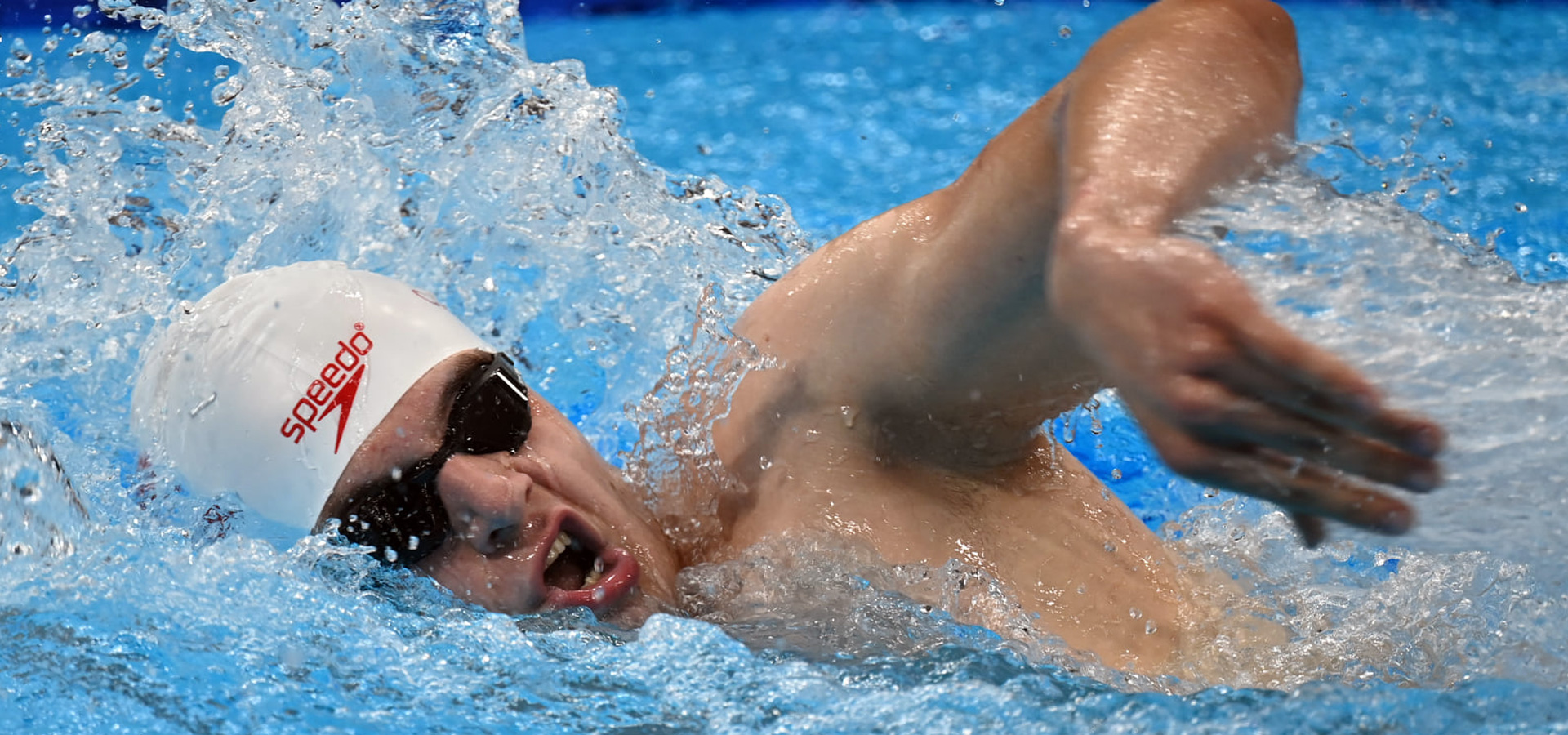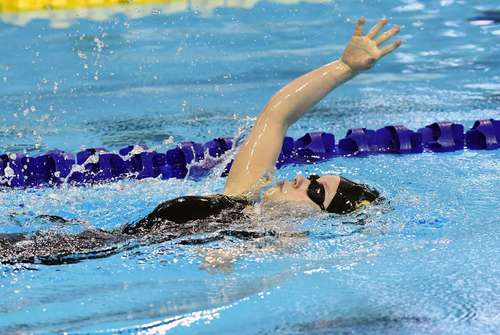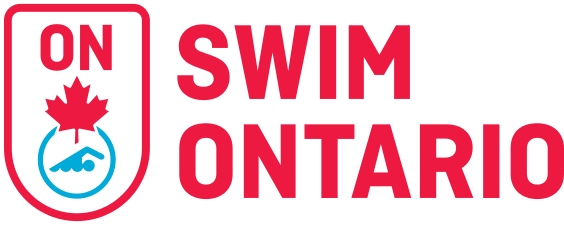Para Swimming

WHAT IS PARA SWIMMING?
Para swimming is competitive swimming for persons with impairments, and includes individuals with physical, visual and intellectual impairments.
Physical impairments include amputation; dysmelia; cerebral palsy; acquired brain injury; dwarfism; spinal cord injury; polio; spina bifida and others (major joint restrictions, coordination restriction, limb paralysis or weakness).
Visual impairments include impairment of the eye structure, optical nerves or optical pathways, or the visual cortex which results in reduced or zero visually perception.
Intellectual impairments include limitations in intellectual functioning and adaptive behaviour as expressed in conceptual, social and practical adaptive skills, which originates before the age of 18.

CLASSIFICATION
Swimming Canada Para Classification Information
A classification system is used to provide structure to the para swimming system and to help minimise the impact of impairment on sport performance. The classification system groups eligible para swimmers in sport classes according to their functional ability within the sport of swimming.
All swimmers with an impairment are eligible to swim at invitational swim meets without having gone through the classification process.
There are currently 14 officially recognized classifications within the Canadian swimming system. Swimmers with physical impairments compete in classes S1 to S10. Athletes with the highest functional ability, while still meeting the criteria to be eligible for para swimming, compete in the S10 classification while athletes with the lowest functional ability compete in the S1 classification.
Swimmers with visual impairments compete in classes S11, S12 or S13. S11 swimmers having very low and/or no light perception, S12’s having more clarity than the S11 class and/or a visual field of less than 10 degrees diameter and S13’s having more clarity than the S12 class and/or a visual field of less than 40 degrees diameter.
Swimmers with intellectual impairment compete in the S14 class.
Domestic Classification:
There are 3 levels of domestic classification:
Level 1:
The introductory classification which provides swimmers with rules exceptions for the purposes of swimmer safety and ensures that the swimmer’s permanent impairment is taken into consideration by officials at swim meets. There are no minimal age or swimming experience requirements.
The sport tags begin with PS and are specific to the impairment category:
- PSPI – Para Swimmer Physically Impaired
- PSVI – Para Swimmer Visually Impaired
- PSII – Para Swimmer Intellectually Impaired
Being considered for a Level 1 classification requires the completion of 2 forms: Request for Sport Class Evaluation and the Classification Sheet Level 1 form.
Level 2:
First introduction to obtaining a specific sport class.
Requirements for consideration to take part in the Level 2 process:
- Be a minimum of 12 years of age or have permission of Swimming Canada’s Classification Lead.
- Have a minimum of 2 years of swimming experience.
- Be technically ready. The more technically sound a swimmer’s skills are the easier it is for classifiers to determine that the impact on the swimmer’s functioning in the water is due to their impairment and not due to a lack of technical swimming skills.
The classification process at Level 2 consists of the completion of the Request for Sport Class Evaluation form (found in Swimming Canada's Learning Management System) by the coach of record. Once the request is processed other forms will be required depending on the swimmer’s impairment.
For swimmers with an intellectual or visual impairment, the process consists of the completion of medical forms by a medical professional and engaging in a technical assessment.
For swimmers with a physical impairment, the process also includes a physical and technical assessment.
The physical assessment involves a bench test completed by a certified medical classifier (typically physical or occupational therapist or medical doctor). Depending on the impairment of the swimmer, components of the bench test may include the evaluation of strength, co-ordination, range of motion, or limb length measurements.
The technical assessment is conducted in the water with swimmers being asked to complete floats, glides, the 4 competitive strokes, turns, starts. The technical classifier has extensive experience within the sport of swimming (typically an experienced coach).
All evaluations whether on the bench or in the pool are scored on a scale of 0 to 5.
Sport class tags consist of 4 components:
“S” Freestyle, Backstroke, Butterfly
“SB” Breaststroke
“SM” Individual Medley
Rule exceptions as required.
Level 3:
Required once a swimmer has achieved a minimum qualifying standard for a national level competition (Canada Games, Can Ams, Canadian Swimming Championships).
Requirements for consideration to take part in the Level 3 process:
- Be a minimum of 13 years of age.
- Have achieved a qualifying standard for a national level competition.
- Provide adequate supporting medical documentation.
The Level 3 classification process begins with a Request for Sport Class Evaluation form being submitted by Swim Ontario to Swimming Canada. Coaches who have an athlete(s) getting close to achieving a CSC standard or who would like to be considered for Canada Games selection should contact Swim Ontario to discuss the submission of a Level 3 request for their athlete(s).
For swimmers with a physical impairment, the process is similar to the Level 2 process, with the addition of an observation component that must take place during a competition and swimmers must enter specific events, called First Appearance events.
For swimmers with a visual impairment, a physical exam by an ophthalmologist who is trained as a classifier is required. A technical assessment is also required
For swimmers with an intellectual impairment, the Level 3 Intellectual Impairment Classification Sheet must be completed by an accredited medical professional. The Intellectual Impairment Sport Call Consent Form must be completed by swimmer/parent/guardian. A technical assessment is also required.
HISTORY
Swimming, and sport in general, for persons with an impairment was borne out of World War II.
The Stoke-Mandeville Games in Great Britain were first held in 1948, providing sporting opportunities for WWII veterans with spinal cord injuries. Athletes from the Netherlands participated in the 1952 Games and slowly the movement grew, with the disability sport landscape improving dramatically through the 1960’s and ‘70’s.
The first official Paralympic Games took place in 1960 in Rome, Italy. Para swimming was one of the eight sports included in the event.
In 1976 Toronto played host to the first “merged” Games, which included athletes with amputations and visual impairments.
Since 1988, the Paralympic Games have taken place in the same cities and venues as the Olympic Games.
The term “Paralympic”, meaning “parallel to the Olympics”, was adopted in 1988 and soon after the International Paralympic Committee was established as the world governing body for athletes with a disability.
Today the Paralympics is the world’s 2nd largest sporting event behind only the Olympic Games, with over 4300 athletes from 160 countries in 22 different sports competing in Rio in 2016.
In 1989, Swim Ontario, along with Sport for Disabled Ontario (now ParaSport Ontario), began working to provide opportunities for children with impairments to become part of competitive swim clubs across the province. In 1997 a “letter of understanding” was signed between Swim Ontario and Sport for Disabled Ontario whereby Swimmers with a Disability (SWAD) officially came under the jurisdiction of Swim Ontario, with all program design and delivery the responsibility of the provincial sport organization. In 2009 the terminology changed from Swimmer with a Disability (SWAD) to Para Swimmers.
Since 1993 Swimming Canada has been the National Sport Organization (NSO) for para swimming, becoming the first integrated NSO in Canada.

Pools to Schools
Swim Ontario, in partnership with Swimming Canada, will be running a para swimming awareness and education program called Pools to Schools throughout the 2022-23 school year

